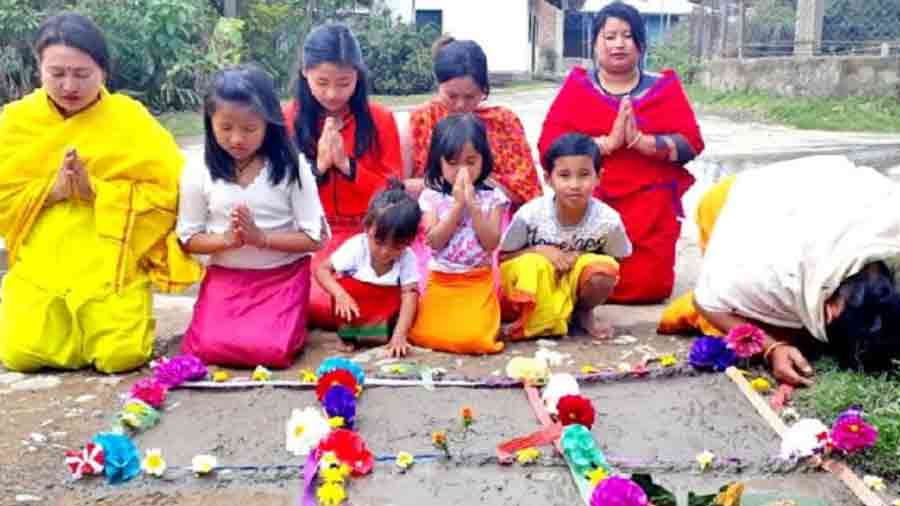What happens when the Jungian archetypal memory of a community’s past has not been successfully reconciled with its present? This question may provide valuable insights into many of the ethnic unrests in the Northeast. Here are tribal communities, many of which “non-state bearing” as James C. Scott puts it in The Art of Not Being Governed: An Anarchist History of Upland Southeast Asia, waking up to the reality of the State in the postcolonial world and desiring one for themselves but finding out that they are already part of another State. There are others amongst whom the State had emerged and got internalised but who are now part of another State.
Of the latter category, the case of the Meiteis, Manipur’s majority community, is of interest. The Meiteis turned Hindu in the early 18th century. The result was a personality split. This duality manifests most strongly during ritualistic celebrations. Until not so long ago, partaking of both entities had come to be accepted without discord as the new and composite syncretic identity of the community. This is still so, although in recent times the emergence of a strong revivalist movement has come to cause a fissure between the two.
The Meiteis turned Hindu when their king, Meidingu Pamheiba, came under the influence of Vaishnavism and decided to make it the State religion. The problem was that at the time the community already had a strong national identity with well-established administrative, economic, cultural, social and religious institutions. The king decided to erase this past and begin a new history. There are many theories to explain his action, not the least being the reality of history in those days. He constantly faced a militantly aggressive neighbour, the kingdom of Ava, in the east; from the west, there were the incessant messages of love and empathy of the Bhakti movement. He chose the latter.
But starting a new history also meant bringing his subjects in line with a new social and cultural order, and this would have to be traumatic. He embarked upon burning and destroying ancient books of the Meiteis known as Puyas in 1729. He then abolished the old Sanamahi religion and ordered the replacement of the Meitei indigenous script — the Mayek — with the Bengali script. These are just some of the evidences of the turmoil. The Meiteis’ split personality problem of today is on account of a persistent memory of the old and a passionate national identity. The fact that many tribal communities in the state and in the Northeast had fewer problems turning to another religion — Christianity — in the early 20th century is a pointer to the source of the problem.
Recently, the celebration of Cheiraoba, the Meitei new year, marked by two dates, brought this identity crisis to the fore. The two Cheiraoba days, one following the lunar calendar and the other the solar calendar, are a legacy of this 300-year-old friction. Some have called for endorsing the lunar calendar date only, the lunar calendar being the original as in the case of the majority of traditional agrarian communities throughout the world. The cyclic changes in the appearance of the moon — its waxing and waning phases — are visible to everyone and easier to calibrate. It is a small wonder that identical lunar calendars evolved amongst numerous indigenous communities. Indeed, the traditional celebration of the onset of spring in India is also dominated by the lunar calendar date and not the solar one.
In Freud’s “Mourning and Melancholia”, he draws a fine line between ‘mourning’ and ‘melancholia’. In ‘mourning’, the mourner and the loss mourned remain separate: hence, the mourner can leave what is irretrievably lost without disowning it. In ‘melancholia’, the lament itself becomes the goal and obsession. Therefore, it is a condition that is much more difficult to leave behind. It is a difficult choice, but on it will depend the ability of those afflicted by such problems to reconcile their past and present. Demons of the past must be exorcised without disowning the past.










